MusicRadar Verdict
In terms of design, features, quality of hardware and image, you get a lot for your money. This is what manufacturing in China offers us pampered Westerners. The odd niggle aside, the XPK is another great addition to the budget market.
Pros
- +
100 percent maple shells on a budget kit? We’ve never had it so good.
Cons
- -
A few minor hardware niggles in what is an overall brilliant package.
MusicRadar's got your back
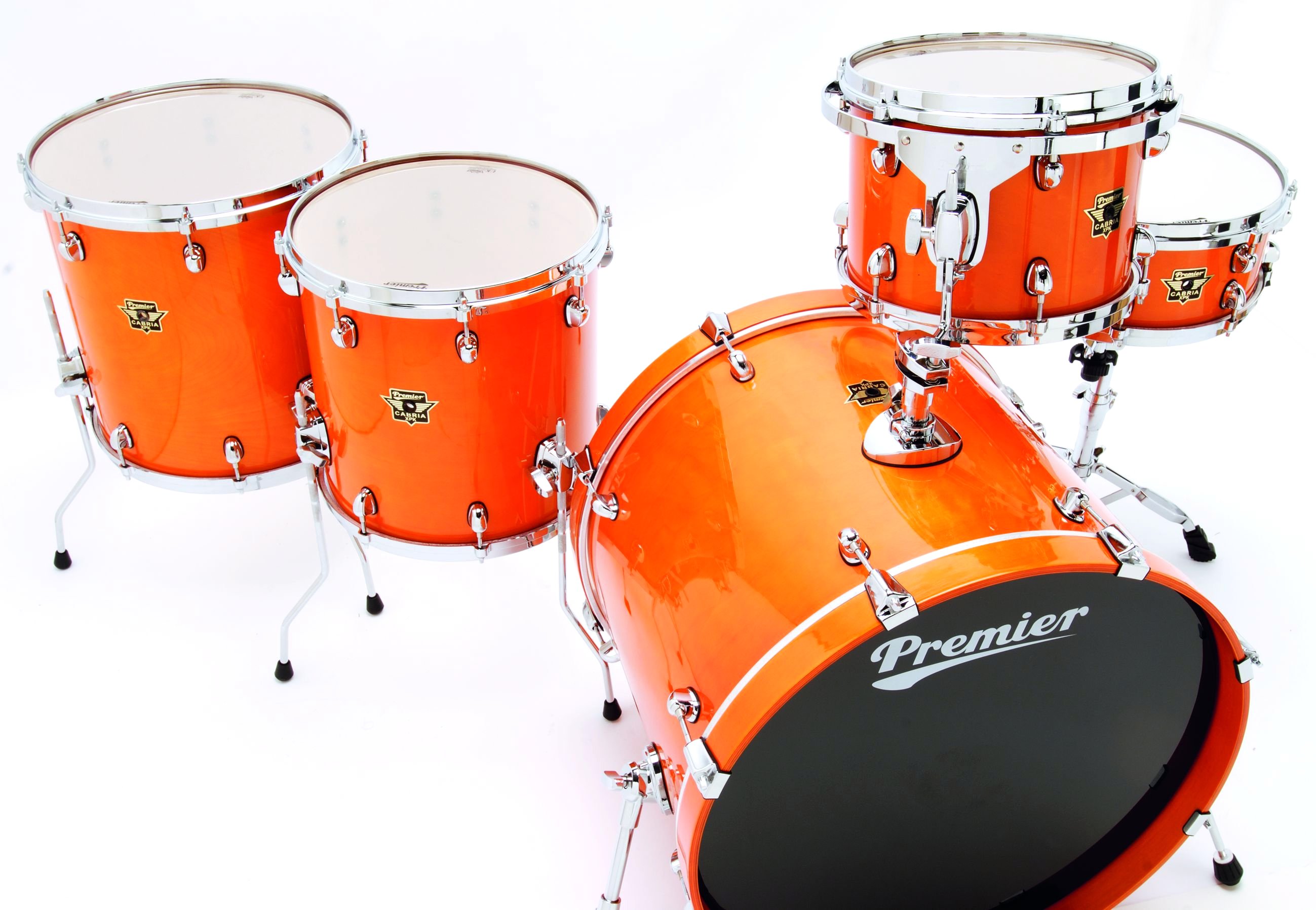
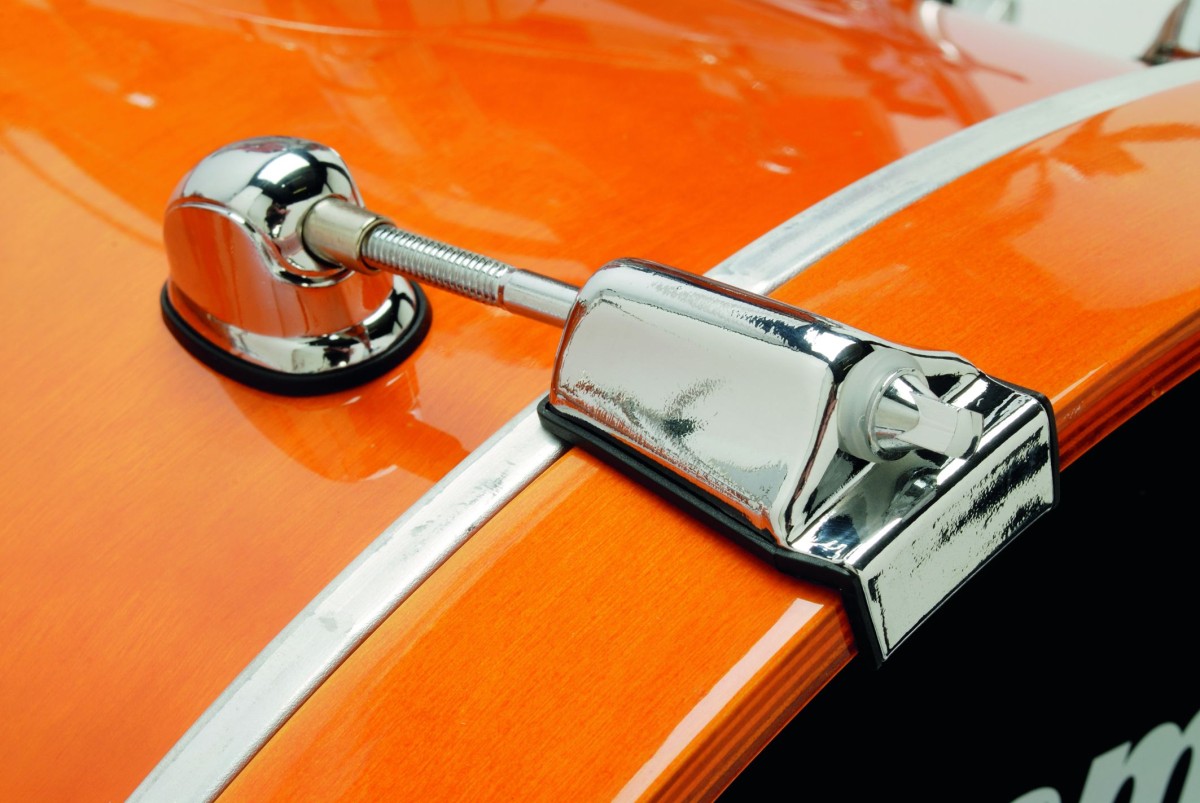
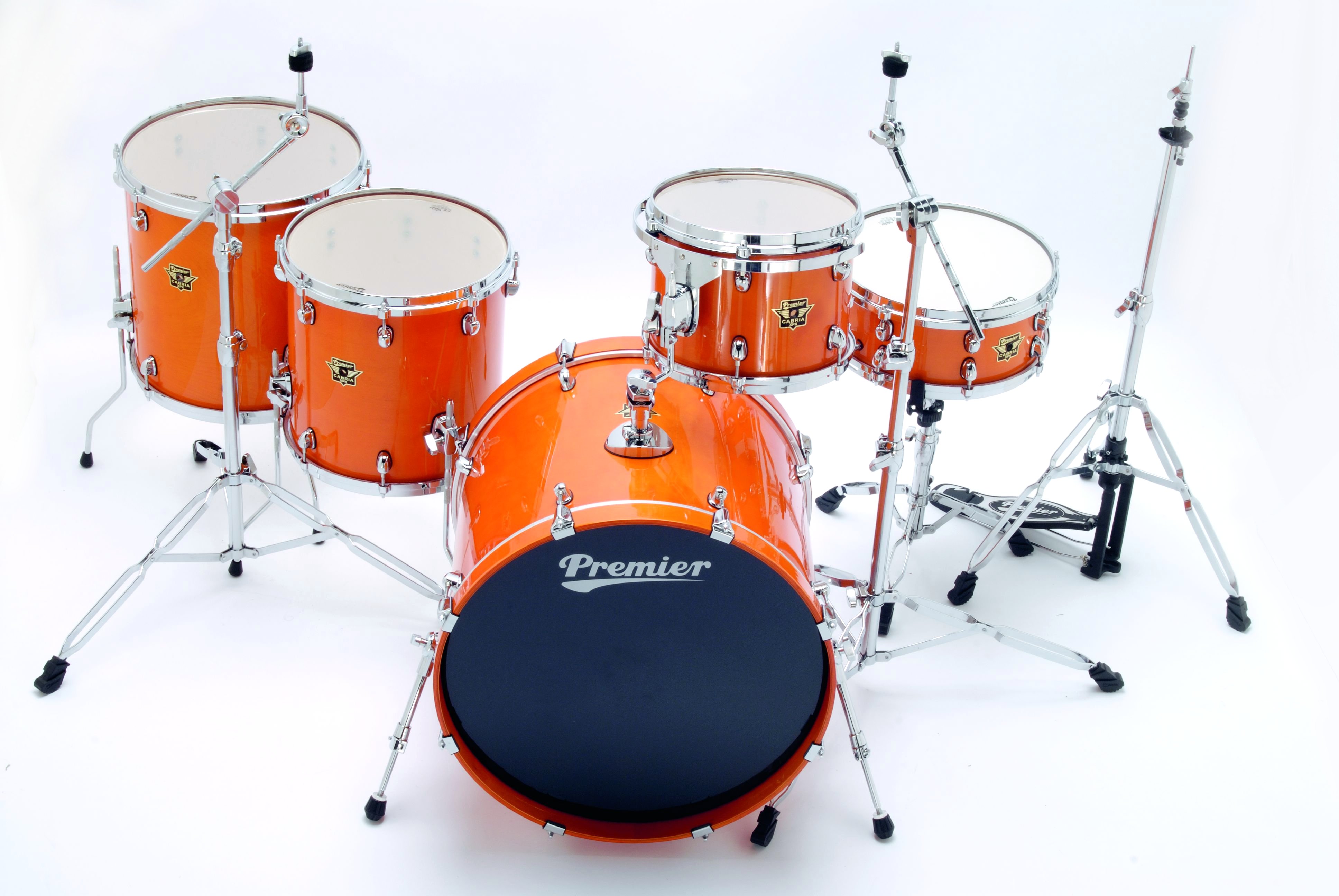
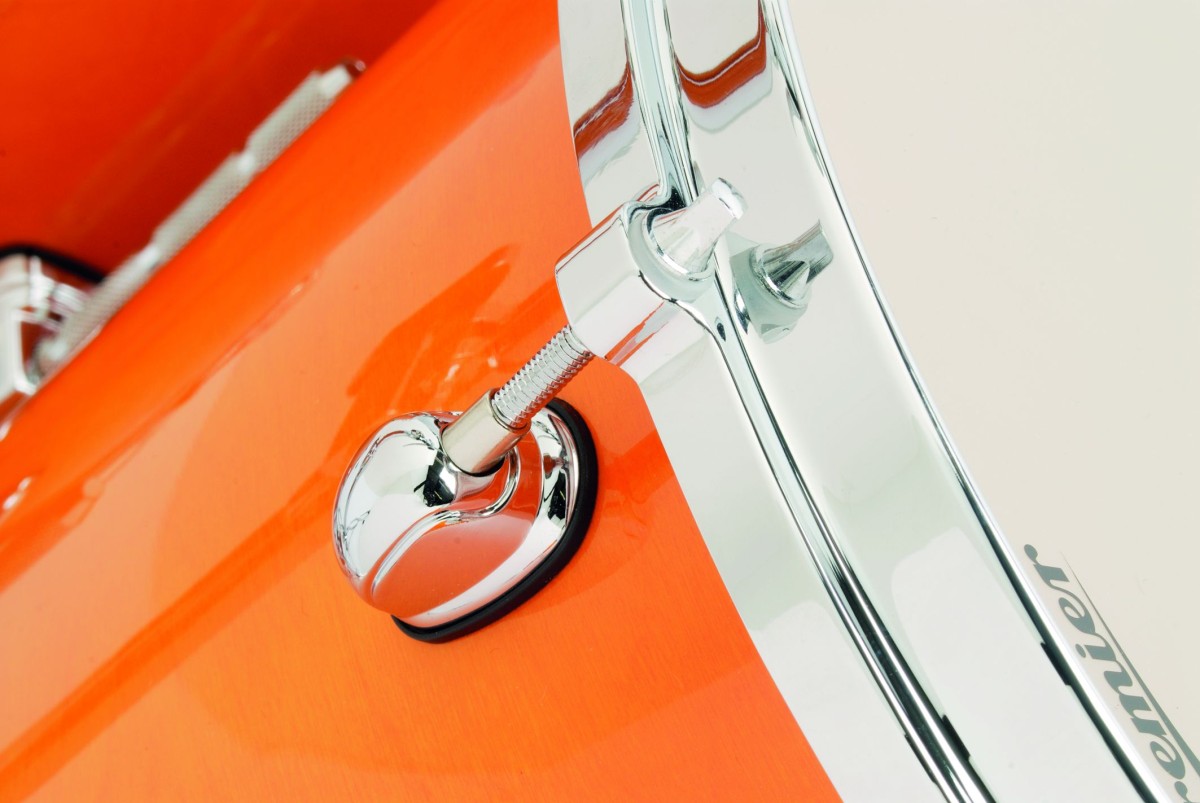
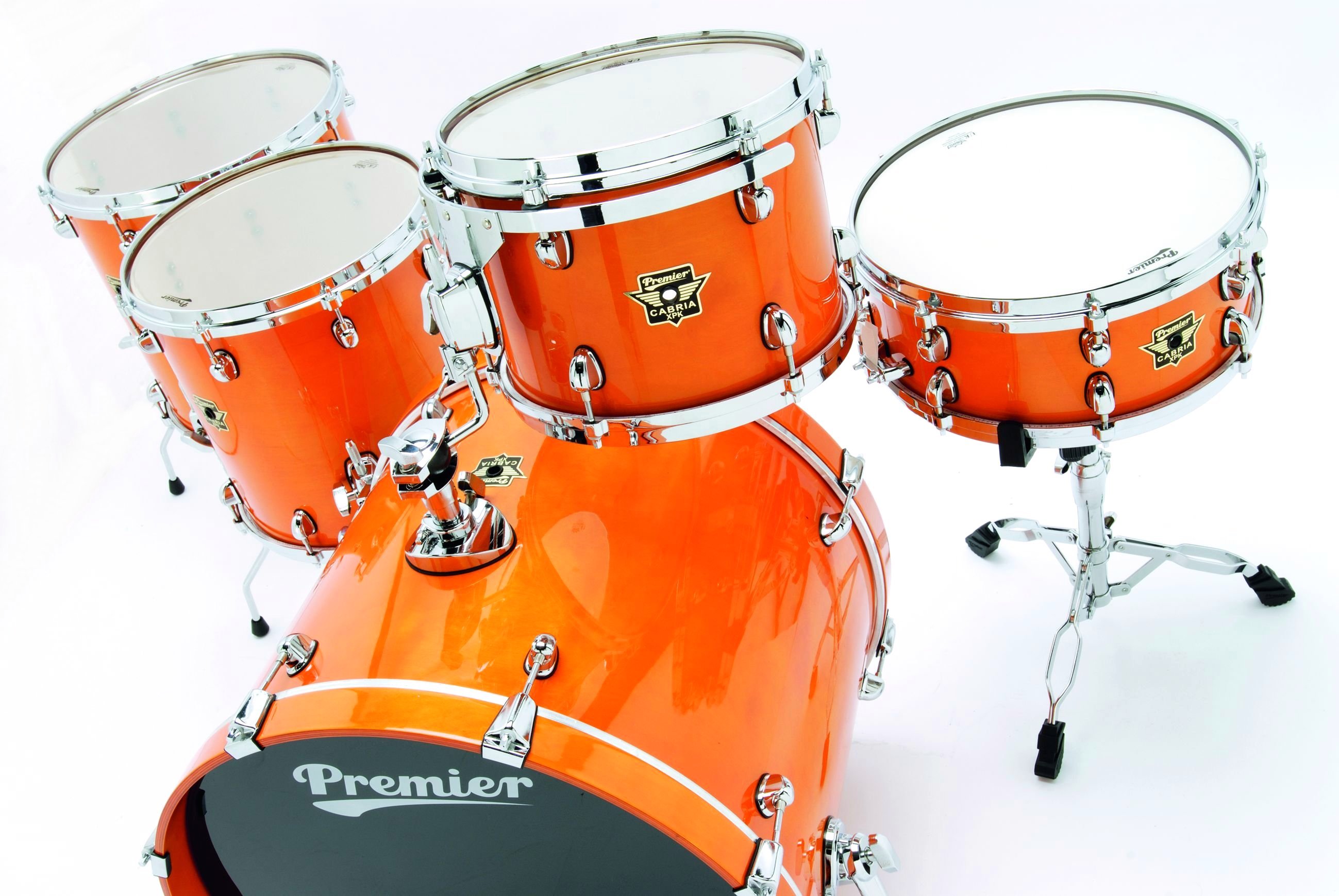
The Cabria was first launched in 1998, taking its place as Premier's most advanced budget-level kit. Today the Cabria is sandwiched between Premier's Olympic beginners' kits and the company's Artist and Series professional ranges.
Cabria itself has been sliced into three bands, the entry level PK, the middle level APK and the top level XPK, with bronze, silver or gold badges assigning rank. The whole Cabria series has undergone a total redesign, with new shells and finishes and new hardware.
The main difference between the three levels is in the wood chosen for construction. The PK has basswood, the APK is ash with a maple inner veneer, and the impressive XPK now has a 100 percent maple shell, for the first time on a budget Premier kit. Yes, it's Chinese maple as opposed to premium North American rock maple, the material associated with more expensive pro kits, but we wonder just how big a difference that makes? Assuming it's the same genus then maple is maple, surely?
Rock steady
There are four set-ups available - a Rock 22, a Heavy Rock 22 (the review kit), a Jazz 22 and a Jazz 20. They all feature the same 14"x5½" wood snare drum. The Heavy Rock kit follows the currently popular one-up, two-down plan with a 22"x18" kick and a single 12"x9" mounted tom together with 14"x14" and 16"x16" floor toms.
The Rock 22 has the more conventional 12"x9" and 13"x10" mounted toms with a single 16"x16" floor tom. The Jazz kits both have smaller 10"x8", 12"x9" and 14"x14" toms, but the 22 has a 22"x18" bass drum while the 20 has a 20"x18".
There's a choice of six lacquered finishes, all of which look very cool. The review kit is in Topaz lacquer, a sort of orange which reminds us of David Dickinson's tan. Incidentally, why is there no natural maple lacquer among the finish options for this kit?
Want all the hottest music and gear news, reviews, deals, features and more, direct to your inbox? Sign up here.
The toms and snare have die-cast hoops/rims which Premier has taken to calling rings. Surely there's enough confusion with drumset nomenclature as it is, without adding another term? Not to worry... These die-cast hoops appear on the XPK, but not the APK or PK. The idea is to distinguish the XPK from the others.
The updated single Roklok tom holder is a sleek, simple unit, just what's needed. I like the look of it better than Premier's double tom holder, which is a bit lumpy.
Generous Package
Turning to the pedals and stands, the special XPK hardware pack is generous, boasting two boom cymbal stands no less, plus hi-hat, bass pedal and snare stand. Everything's double braced and similar to Premier's new middle level 4000 Series.
All of Premier's hardware has recently been overhauled, with much appreciated inventiveness lavished on the details. There are one or two niggles, so let's get those out of the way first.
The biggest concerns the snare drum stand, which at full stretch might only just reach a reasonably high playing position. Here's a shortcoming that needs rectifying. Less crucial is that the boom arm on the cymbal stand is quite short (only 33cm), though there is a good 10cm tilter extension. Finally, when you tighten the wingnuts on the floor tom legs and bass drum tom mount you can almost get your fingers trapped between wingnut and shell - there's minimal clearance.
Now for the plusses, which far outweigh the gripes. The cymbal and snare stand tripods convert to flat-based stands if you prefer, which is brilliant. And when folded flat, the cymbal stand spread is vast. All section housings on the stands have a sexy oval shape and the integrated memory locks slot in to complete a satisfyingly curved line.
All wingnuts have an ergonomically shaped thumb and finger-hugging sweep which is also quite sensuous.
The XPK is further distinguished from the APK/PK by having a carpet-hugging base plate for its kick pedal. You can adjust the spring tension and beater angle, while the beater itself is double-sided felt and hard plastic.
The footboard on the matching hi-hat can be rotated through 90º to accommodate a double kick pedal, etc. The pedal has four-step spring tension adjustment, and we also like the way the hi-hat cymbals are mounted. The top cymbal is gripped between two thick rubber ball washers for minimum contact, while the lower cymbal sits on three minimal felt pads, again letting the cymbal breath to the max.
Deep Rumble
The XPK's toms are 6mm and six-ply, while the snare and bass drums are 8mm, and eight-ply. Maple has long been the most popular wood for drum shells. It has a warm, deep timbre with resonance to spare. It's not quite so focused as birch and the XPK's heavy die-cast rims reign in the sound a bit.
Ironically, the XPK, with its straight-sided maple shells, small rounded lugs and die-cast hoops follows the vintage Gretsch template that has so many fans. Can't be bad.
The bass drum is the now standard, cavernous 22"x18" which can be boomy. The maple gives it a dark, banging tone, but a modicum of damping brings out the best in it and there is certainly plenty of beef to be heard.
The small tom comes fitted with Premier's ISO enhanced resonance mount and is an ideal size for combining punch with body and volume. The floor toms work well together, offering an added dimension, which is great for rumbling floor tom and kick combinations.
The snare, with its eight-ply shell and die-cast hoops produces clanking rim shots, fat cross-stick sounds and sparkling edge sensitivity. We did have trouble with an unpleasant high-pitched ring that I couldn't tune out, but managed to zap with a small piece of Moongel. It may have to do with the snare not lying square - a broader strap (or cords) would help. Or maybe it's the unbranded, budget conscious resonant head.
The snare throw-off has a brand new, radial, pull-away lever. It is a solid, fresh design, but I found the lever a bit small.
Forget the budget tag - it's getting tougher to be critical in reviews because the standard today is so high. Ok, there's only one snare size, and the choice of sizes and finishes are limited, but the main thing that defined budget kits in the past was the type of wood, and here we have 100 percent maple.
MusicRadar is the number 1 website for music makers of all kinds, be they guitarists, drummers, keyboard players, djs or producers...
GEAR: We help musicians find the best gear with top-ranking gear round-ups and high- quality, authoritative reviews by a wide team of highly experienced experts.
TIPS: We also provide tuition, from bite-sized tips to advanced work-outs and guidance from recognised musicians and stars.
STARS: We talk to musicians and stars about their creative processes, and the nuts and bolts of their gear and technique. We give fans an insight into the actual craft of music making that no other music website can.
